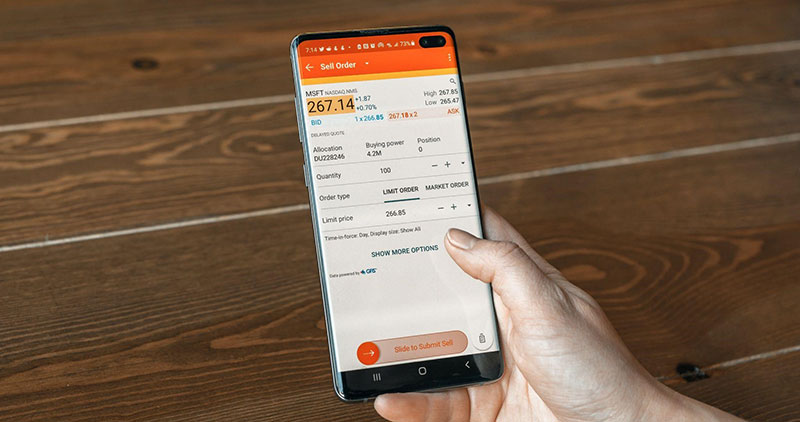Fintech Cybersecurity: Knowing The Risks And Staying Safe

When we see the landscape of financial technology, we realize just how fast innovation occurs.
Every breakthrough is aimed at one goal: an accessible, secure, and seamless financial experience for everyone.
However, cybersecurity threats are no joke, especially when it comes to the financial and technology industries.
Let’s dive into the most common fintech cyberthreats and how to avoid them successfully.
1. Data Breaches: Our Information Is Vulnerable
Every company with an online presence stores data from their clients. But fintech companies have access to even more sensitive data than others: personal, financial, and transactional as well.
This plays into our new digital world: 45% of financial institution owners have declared fintech security as their top priority.
Cybercriminals looking for money know the value of this information.
A single data breach can compromise the entire company, leading to financial losses, penalties, and even direct, irreparable damage to the customer’s trust and the company’s reputation.
2. Payment Frauds: Fighting Against Unauthorized Transactions
Digital payment methods are amazing, from contactless payments and peer-to-peer transfers to mobile wallets. But all these ways to pay without using cash are a great opportunity for scammers.
If companies don’t have strong security measures in place, their fintech platforms are doomed.
Hackers will use them to make unauthorized transactions. This means that for businesses and individuals, it can be a disaster.
3. Regulatory Compliance: Finding A Balance
Regulatory compliance can be tricky to navigate because the consequences are severe. Strict regulations have been set in place for the financial industry. This aims to protect consumers’ interests and ensure the safety of their sensitive data.
If fintech businesses fail to comply with these standards, they can get fined, face legal repercussions, and loss of credibility. And we’re not even considering what hackers can get access to if there’s a breach.
4. Identity Theft: A Common Cybercrime
In the fintech industry, both personal and financial data are mixed. Identity theft is a constant threat to everyone in it.
Unfortunately, the FTC received 5.7 million reports of identity theft and fraud, up from 4.7 million the previous year, which means cybercrimanals are evolving their malicious techniques.
Cybercriminals target fintech companies to access the information that allows them to impersonate different individuals.
This results in all the dire consequences we’ve mentioned before, from loss of trust in the company to financial losses for everyone.
How To Mitigate The Fintech Cybersecurity Threats?
The fintech industry can count on several mitigation tactics to avoid, combat, and stop the cyberthreats we mentioned.
Strong Encryption To Hide Data
One of the best security measures is encryption, as it helps protect sensitive information. If only the right software can decipher encrypted data, hackers won’t have a chance to come through.
This ensures that, even if some information is stolen, it can’t be deciphered. It’s one of the most essential ways to protect people’s data.
Multi-Factor Authentication
Passwords alone aren’t enough anymore. Hackers can get to those and enter our accounts without us even knowing how it happened.
That’s why multi-factor authentication was created. It requires users to provide different forms of verification to access software or information.
What does this mean?
In a nutshell, it’s a combination of strategies. On one hand, there’s the password, but then you may have to write down a code sent to your phone. This measure can stop up to 96% of phishing attacks, and 100% of automated attacks.
Constant Monitoring To Stay Ahead Of Threats
Security measures have evolved, and cyberthreats have done the same. Sometimes at an alarming pace. That’s why it’s so important to prioritize real-time monitoring for both systems and networks.
When businesses take proactive approaches to these problems, they can detect anomalies and suspicious activities faster. If they have a response plan in place, they can deal with breaches before they even escalate.
Virtual Private Networks (Vpns) For Data Transmission Safety
Yes, VPNs are instrumental for fintech companies, but what does a VPN do?
This software encrypts the internet connection, not only the data, and it makes data transfer between networks and devices a lot more secure.
Since VPNs create secure and private communication channels, they diminish the risk of unauthorized access and interception.
Conclusion
In the ever-changing fintech industry, it’s essential to remember cybersecurity. As groundbreaking technology helps us become more efficient and save time and money, understanding the risks of compromised information is paramount.
By putting strong cybersecurity measures in place with multi-factor authentication, encryption, and constant monitoring, fintech companies are preserving the trust of their customers and their finances.
Stay innovative, stay secure!
- Integrating External JavaScript for Enhanced Functionality - May 15, 2024
- Learn about Technical Skills in the Tech Age: 6 Educational Tips - May 15, 2024
- Understanding DDoS Attacks: What You Need to Know - May 15, 2024








